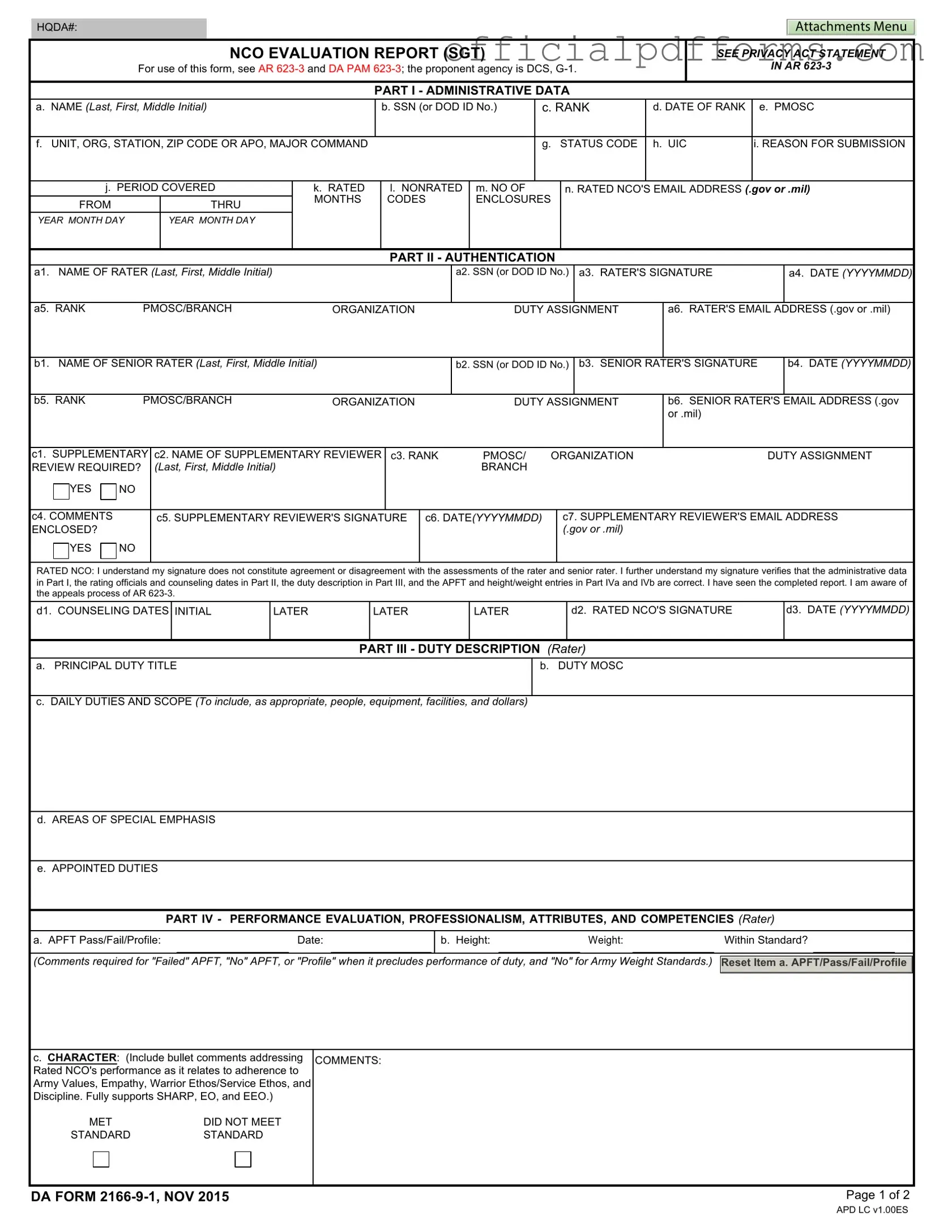Fill in a Valid Da 2166 9 1 Form
The DA 2166-9-1 form is an essential document used for the evaluation of Non-Commissioned Officers (NCOs) in the U.S. Army, specifically designed for the rank of Sergeant. This form captures critical performance metrics and administrative data, ensuring that evaluations are thorough and standardized. For those looking to complete this important assessment, click the button below to get started.
Access Form Online
